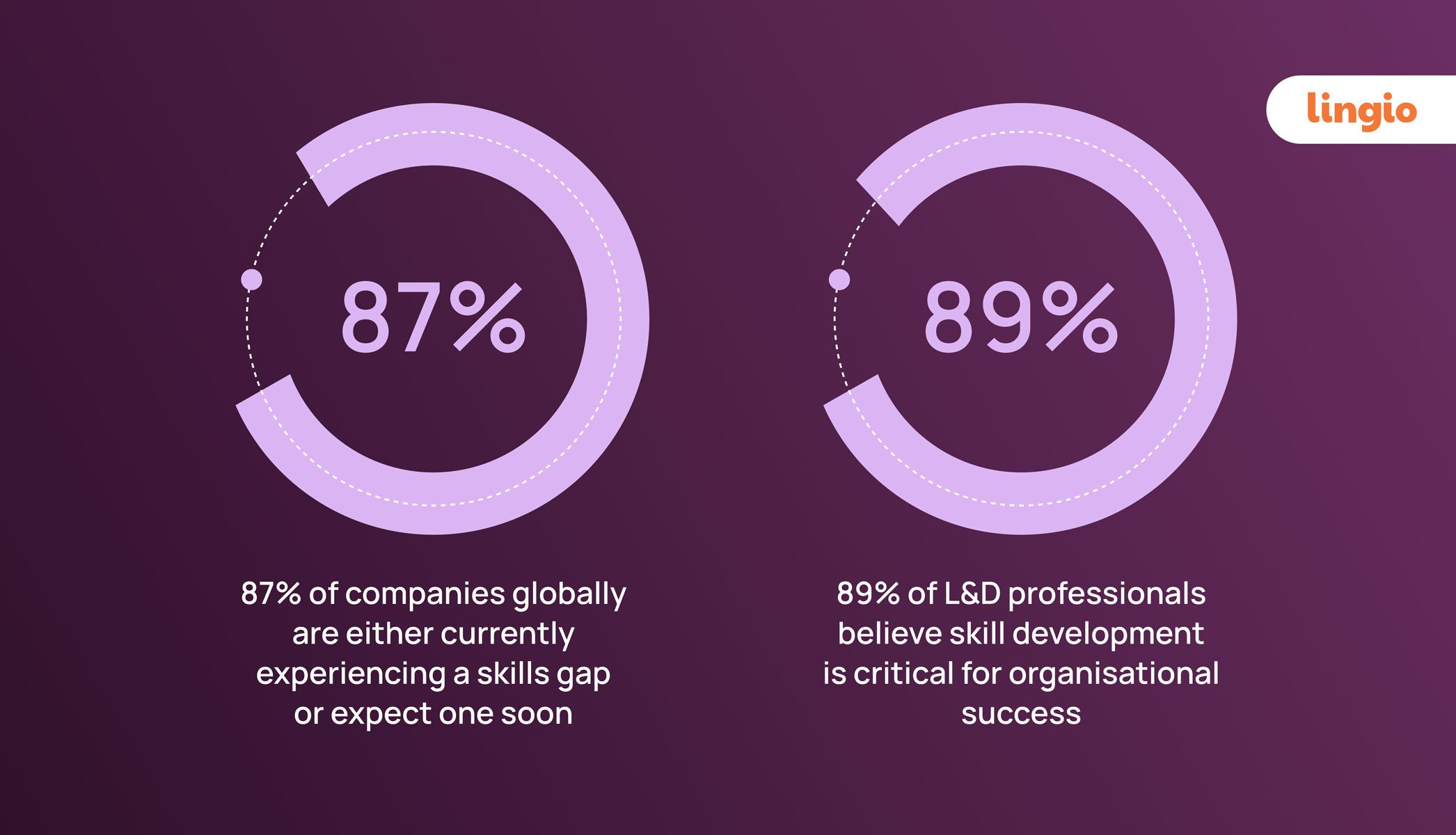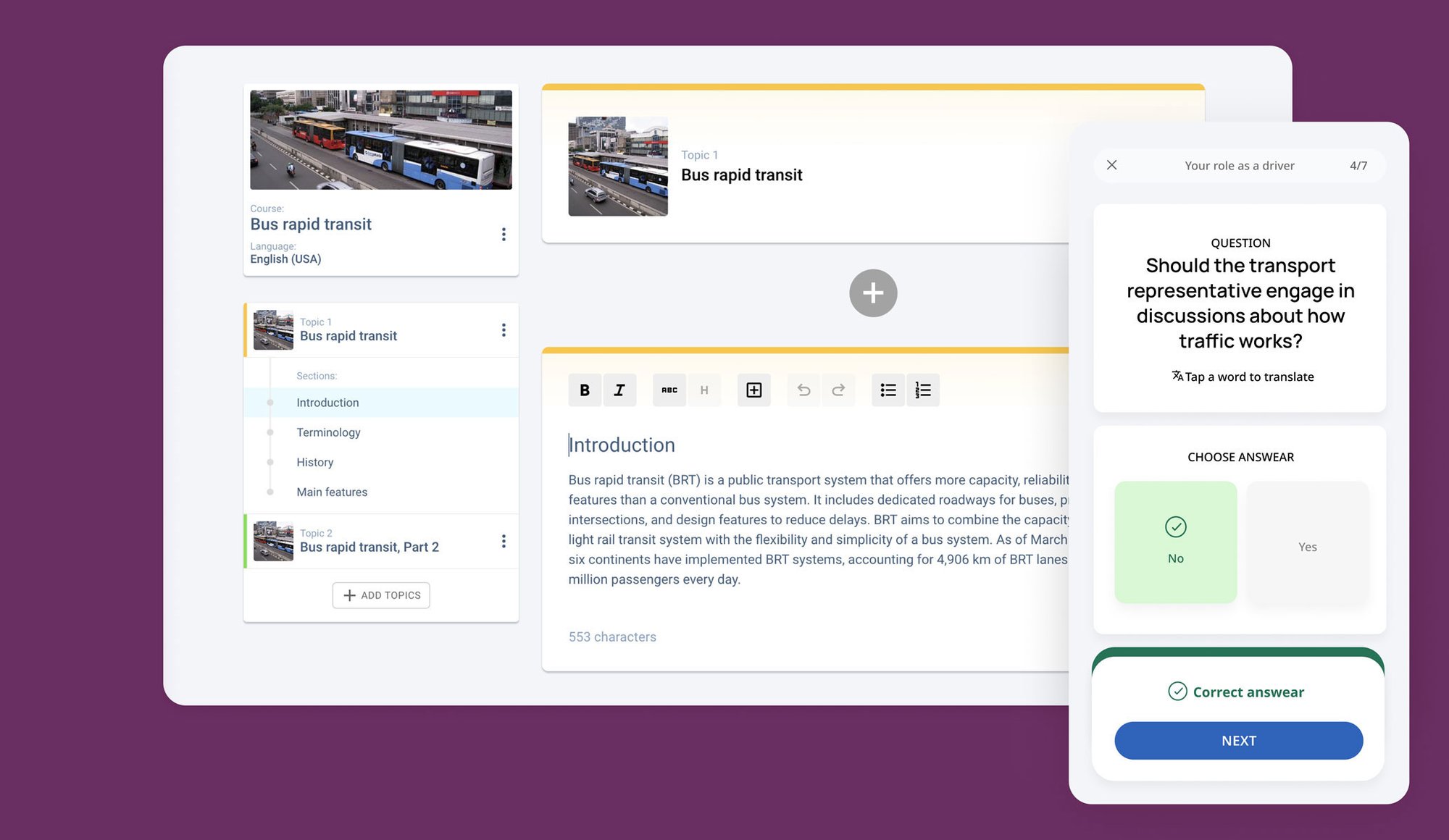According to McKinsey and Company, 87% of companies globally are either currently experiencing a skills gap or expect one soon. This guide dives into the importance of closing these gaps, focusing on the transformative shift towards digital and AI-assisted tools that enhance the precision of skills assessments. From understanding the basics of assessments to implementing advanced techniques, we'll cover how to effectively evaluate your team's capabilities and expertise, ensuring your organisation stays ahead.
Understanding employee skills assessments
-
Approximately 89% of L&D professionals believe skill development is critical for organisational success, and assessments can help with this process. Skills assessments help identify existing competencies, pinpoint skill gaps, and inform targeted learning initiatives. They range from soft skills evaluations, like communication and teamwork, to technical programming or data analysis proficiencies. Performing skills assessments aligns with the organisation's developmental needs and also supports recruitment and operational strategies by clarifying workforce capabilities.
Many staff are often very interested in completing an employee skills assessment, too. For example, an employee might want to take a skills assessment to demonstrate they have the correct qualifications for a promotion, or to see where they’re lacking in their career development journey.

Planning your skills assessment strategy
Next, let’s cover how to assess employee skills and competencies with a solid business strategy.
1. Identifying key competencies and skills to assess
When it comes to assessing employee skills, identifying the key competencies and skills to examine within your organisation is essential. This process requires a strategic alignment with business goals and specific job roles. Begin by analysing job descriptions and performance data to establish the critical technical, soft, and transferable skills that contribute to business objectives. Engage stakeholders through workshops or meetings to define essential knowledge competencies and ensure assessment criteria are comprehensive and tailored to real-world needs. This collaborative approach enhances the relevance of the assessments and also secures organisational buy-in and supports targeted developmental paths.
2. Choosing the right skills assessment tools and platforms
When choosing the right employee skill assessment tools, be sure to compare digital and traditional methods. A digital learning management platform (LMS), like the Lingio AI Course Creator, offers scalability and easily accessible learning and training, transforming how organisations approach competence assessments. For example, with Lingio, organisations can swiftly create engaging, gamified courses and quizzes to better understand employees’ skill sets.
Platforms like Lingio provide interactive, customisable training, ensuring assessments align with diverse learning paths. Traditional methods, such as written assessments for staff to fill in, are sometimes preferred for simplicity. However, they often lack the adaptability and efficiency of digital solutions. With online learning platforms, employees can access materials at any time, anywhere, which is highly convenient. When selecting an online tool, focus on its ability to meet your organisational needs, ease of use, and potential for growth and expansion.
3. Designing the assessment process
Designing an effective assessment procedure requires a structured approach to ensure it’s transparent, inclusive, and flexible enough to cater to various job roles and departments in the business.
Here are some tips on how to upskill employees:
- Start by establishing clear objectives that align with your organisational goals and tailor the metrics accordingly
- Develop a comprehensive timeline that respects the urgency and the practicality of execution
- Select qualified assessors from within your organisation or opt for credible third-party evaluators to maintain impartiality
- Provide detailed guidelines to ensure consistency across different assessments, allowing modifications to suit departmental needs without compromising the integrity of the procedure
Implementing skills assessments
Now, let’s discuss how to successfully implement an employee skill assessment.

1. Best practices for effective assessment
To ensure effective and fair assessments, it is crucial to uphold objectivity and help reduce anxiety among employees. Begin by standardising procedures and using robust, validated tools to mitigate bias and maintain fairness across all evaluations. Train assessors thoroughly to handle the nuances of fair judgment and consistent application of criteria. To minimise anxiety, communicate the purposes and benefits of the assessments clearly to candidates and employees, providing them with preparation resources and feedback opportunities. Furthermore, all assessment processes should be transparent and include space for employees to voice concerns or seek clarifications, enhancing trust and openness.
2. Incorporating AI and digital tools in assessments
Incorporating AI and digital tools into assessments revolutionises how skills are evaluated and developed. AI-driven platforms like Lingio can tailor assessments, offering a customised approach to talent management. These innovative technologies streamline the evaluation and deliver a bespoke and adaptive learning experience that’s scalable across large organisations. Many training tools seamlessly integrate into existing learning and development (L&D) frameworks, enhancing efficiency and providing deep insights through data analytics.
3. Handling feedback and results analysis
Handling feedback and results analysis effectively is essential in turning assessment data into actionable insights for employee growth.
Here are some tips on how to coach employees:
- Start by clearly communicating the assessment outcomes to each employee, focusing on strengths and weaknesses.
- Use specific, constructive feedback to guide staff towards necessary skills development.
- Incorporate data analytics to deepen the understanding of results, identifying patterns and critical skill gaps.
- Develop personalised improvement plans with clear, measurable goals and provide resources for achieving these objectives.
- Always deliver feedback in a supportive manner that motivates continuous learning and professional development.
4. Scheduling and organising assessment sessions
Organising assessment sessions requires meticulous planning to minimise work disruption. Establish timelines that integrate smoothly with regular business cycles and choose periods of low activity for minimal impact. For in-person assessments, ensure logistical details like space, equipment, and materials are arranged well in advance to avoid last-minute issues. In remote settings, confirm that all participants have the necessary technology and understand the platform's use. The good news is that with most LMS platforms, such as Lingio, employees can submit assessments remotely in their own time, making scheduling and planning much more straightforward. Regular reminders and clear instructions will help manage both setups efficiently, ensuring the process is seamless and productive.
5. Legal and ethical considerations in skills assessments
Navigating legal and ethical considerations in skills assessments is crucial for maintaining trust and compliance. Ensure adherence to relevant employment laws and ethical guidelines to avoid discrimination and uphold fairness. Protecting employee privacy is paramount, so make sure to secure personal data and restrict access to assessment results to authorised personnel only. Employ robust data security measures to prevent unauthorised data breaches. Transparently communicate how data will be used, stored, and protected, helping employees feel secure and respected throughout the assessment process.
6. Adapting assessments for remote workforces
Adapting assessments for remote workforces involves customising techniques and leveraging advanced technologies to ensure effectiveness across distances. Utilise platforms like Lingio, which offers flexible, customisable assessment courses on mobile phones and other devices tailored for remote environments. This technology bridges distance gaps and enriches the learning experience through interactive and engaging digital training. By integrating such tools, companies can maintain rigorous standards and consistency in evaluations, ensuring remote employees are assessed with the same rigour as any in-office counterparts.
7. Preparing employees for skills assessments
Preparing employees well for skills assessments is critical to their success and acceptance of the process. Provide comprehensive training and resources that explain the assessment's objectives, procedures, and benefits, demystifying the process to reduce any anxiety. After all, many employees may assume that having to complete a skills assessment is a negative task. Encourage a growth mindset by framing assessments as opportunities for development rather than evaluations of weaknesses and inadequacy. Offer strategies to manage test anxiety, such as relaxation techniques and practice sessions, which help employees confidently approach assessments and view them as milestones on their professional development journey.
8. Continuous improvement of the assessment strategy
To continuously improve the assessment strategy, actively gather feedback from participants and stakeholders to evaluate the process's effectiveness and fairness. Use this data to refine methodologies, ensuring they align with organisational goals and employee needs. Continue addressing identified skill gaps through customised training and development programs tailored to enhance specific competencies. This helps employees progress and ensures that the assessment strategy evolves to meet the dynamic demands of the workforce and the marketplace.
Employee skills assessment template
This free employee skills assessment template is designed to streamline the process of evaluating your team's competencies. Use it to consistently measure and analyse skills across various roles within your organisation, ensuring your workforce aligns with your strategic objectives and operational demands.
Create an employee skills assessment with Lingio
Effectively assessing employee skills is crucial for identifying gaps and promoting organisational growth. Using platforms like Lingio's AI Course Creator streamlines this process, allowing you to create custom assessments suitable for diverse workforce environments. With Lingio, companies can achieve precise skills evaluations and cultivate a culture of continuous learning and development. Enhance your team's capabilities and align their skills with your strategic objectives using Lingio's AI Course Creator today. Embrace smarter, more effective assessments now.
FAQs
1. What is an employee skills assessment?
An employee skills assessment is a systematic process used to evaluate employees' abilities and competencies. It helps identify strengths, uncover skill gaps, and inform development strategies, ensuring the workforce can effectively meet current and future organisational demands. Assessments may include various methodologies, both traditional and digital.
2. Why is it important to assess employee skills?
Assessing employee skills is crucial for aligning workforce capabilities with organisational goals. It helps identify skill gaps, optimises team performance, and directs targeted training programs. Furthermore, it enhances recruitment strategies and succession planning, ensuring the right candidates are in place to drive business success and adapt to market changes.
3. How often should skills assessments be conducted?
Skills assessments should be conducted regularly, typically once a year, as part of annual performance reviews. However, more frequent assessments may be beneficial in rapidly changing industries or roles where continuous skill development is crucial. This allows organisations to stay agile and responsive to emerging skill needs.


Table of contents
Intro
Understanding employee skills assessments
Planning your skills assessment strategy
Implementing skills assessments
Employee skills assessment template
Create an employee skills assessment with Lingio
FAQs


